How to use silica in your cannabis grow
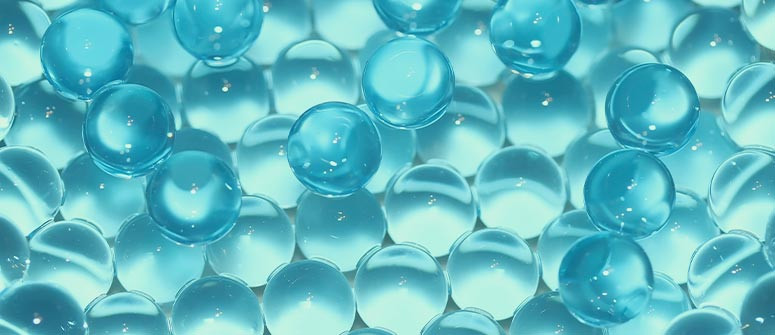
The quest for healthier cannabis plants and bigger harvests never ends. Lesser known, and not essential, the addition of silica often passes growers by. However, the Earth's second most abundant mineral can offer a lot to cannabis plants, including stronger growth, pest protection, and more. Find out how to take full advantage of silica for weed.
Contents:
There are many nutrients that cannabis requires to survive, and sometimes the sheer variety can seem overwhelming. One nutrient that perhaps doesn’t get a large share of the spotlight is silica. Technically, cannabis plants don’t require extra silica in order to be happy and healthy, as they store it in abundance anyway. Nevertheless, there are a whole host of benefits associated with adding silica to soil or using it as a foliar spray.
In this article, we look at the benefits of using silica for growing cannabis, then show you how to use silica supplements in both soil and hydroponic setups.
What is silica?

Silica—or silicon dioxide—is an oxide compound formed from the element silicon. Silicon is the eighth most common element in the known universe, and the second most common on Earth (in the form of silica), after oxygen. In fact, 90% of the Earth’s crust is formed from silica, and it can be found in 95% of rock samples.
Silicon in its elemental form is rarely found on Earth, but, as you can see, silica is found in abundance. Given how common this compound is, and how much of it is found in the ground, it stands to reason that cannabis plants would have a natural kinship with silica. More on this shortly.
How is silica formed?
Silica, as mentioned, is an oxide of silicon. This means that the silicon atom bonds with oxygen atoms to form a compound. In the case of silicon dioxide, one silicon atom joins with two oxygen atoms. This is why silicon on its own is so rare on Earth, because of the abundance of oxygen. There’s plenty of O (oxygen) atoms for every Si (silicon) atom to gang up with.
The benefits of silica for growing cannabis
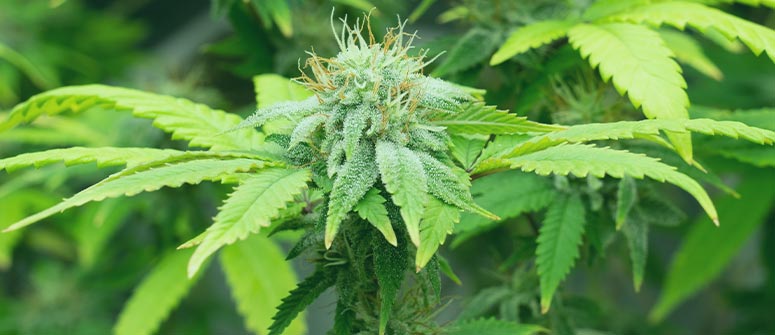
Now that we know a little more about what silica is, we can investigate how it works in cannabis plants. Though silica is not considered an essential plant nutrient, that’s not to say supplementing with it doesn’t come with great benefits.
Here’s what adding silica to your cannabis grow can do.
Faster growth
Silica can supercharge a plant's metabolism, causing it to create the cells it needs to thrive at a faster rate. For instance, silica-rich plants have higher chlorophyll production compared to others, which allows them to photosynthesise at a greater rate and thus create more energy, stimulating growth.
Improved nutrient absorption
Silica is doubly useful when it comes to nutrient absorption. Giving silica to plants growing in healthy soil will help to optimise nutrient uptake and ensure the best levels of both essential and non-essential nutrients.
But that’s not all. Add silica to poor-quality, low-nutrient soil, and you can increase the capacity of cannabis roots to extract every last molecule of goodness from it. Moreover, add it to healthy soil, and as your plants use up the stores of food in the soil, they’ll be able to extract more as the levels deplete.
Protection against toxic metals
Although good-quality soils should be free from the presence of toxic, heavy metals, this may not always be the case. These metals—chromium, lead, aluminium, and mercury—are toxic to plants, even at very low concentrations. Even if they don’t prove fatal, they can cause poor plant growth, discolouration of leaves, and prevent proper uptake of nutrient solution. At worst, they can kill plants.
Fortunately, silica can reduce the bioavailability of these heavy metals in the soil, meaning that even if they are present, your plants are much less likely to absorb them. If possible, you should avoid growing in these soils in the first place, but, especially if guerrilla growing outdoors, you may not have a choice.
Stronger plants
One of the main ways cannabis plants use silica is in the production of cell walls. Naturally, by creating sturdier cell walls, plants themselves become sturdier, with thicker stems and branches. This happens in two ways.
First, they are simply stronger in the sense that they are able to bear more in the way of weight and wind, which is especially useful for outdoor growing (though it has its uses indoors too). If you’re going for a monster harvest, then your plants need to be able to support the amount of bud they’re growing. You don’t want to peek into a grow tent to find a cola has grown so large that the branch has snapped. Silica can help to stop this from happening.
Second, it can help to prevent osmotic stress too. This is the stress caused by water passing in and out of cells. Primarily, a good watering schedule will do this, but supporting the plant with extra silica is well worth it. Watering will rarely be perfect, and if you can compensate for this, then why not do it?
Protection against pests and diseases
Plants can concentrate high levels of silica around damaged and infected areas, creating a mineral barrier. This makes it more difficult for microbes and insects to break through the outer parts of plants.
Though silica doesn’t remove the risk of infestation entirely, it gives the plant a better chance of being able to adequately defend itself. And keeping plants heathy and able to prevent infestation themselves is much easier than having to step in and help them once an infestation has taken hold.
How to use silica when growing cannabis
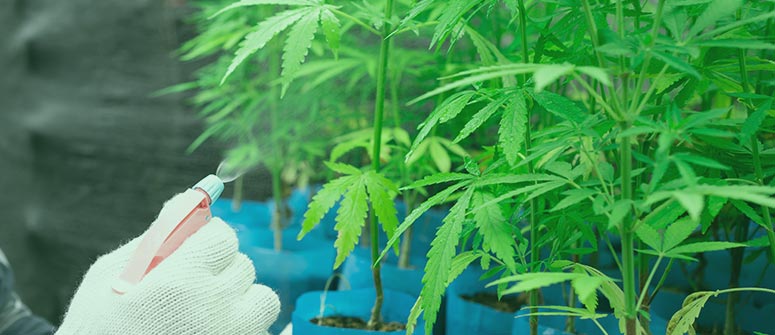
Using silica for cannabis plants isn’t hard. There are two main types of silica supplements available: foliar sprays and root formulas. The former allow your plants to absorb silica directly into their cells via their fan leaves, while the latter come with the added benefit of getting silica into the soil too. As you can see above, silica-rich soil has a few extra benefits over foliar feeding.
Fortunately, you can also opt for both options.
Important considerations for using silica with cannabis
Using silica is a little different to using other fertilisers, and there are some factors to take into account before you start administering it.
Primarily, silica must be added to water in the form of potassium silicate. This is the same whether you’re growing hydroponically or adding it to a soil grow. Potassium silicate is alkaline, which means it will raise the pH level of your growing medium, potentially causing issues with nutrient uptake. So be aware of this, and regularly check your medium’s pH, and adjust as necessary.
When to stop using silica
It’s unclear when growers should stop using silica. Some claim that you should cease using it in the third week of flowering, while others continue to use it through to the end. By the third week of flowering, most of the plant’s growth has stopped (excluding bud production). This means that cell walls should be fully formed, and accelerated growth is no longer necessary.
That being said, plants still need nutrients, and have to defend themselves from pests and disease. With the available evidence, it seems that both stopping and continuing to administer silica during the flowering stage are viable options.
One thing to be aware of: as silica increases tough cell growth, it’s possible that buds containing large amounts of silica will end up being extra-tough too, which might not be so pleasant when the time comes to smoke them.
Using silica when growing cannabis in soil
When growing in soil, your silica supplement should be added separately to other nutrients. This is because it can reduce the bioavailability of fertilisers, which could actually be detrimental to the health of your cannabis. So silica must be added between feeding sessions.
Alternatively, using a silica foliar spray avoids this issue, as it doesn't enter the soil or touch the roots. In this sense, foliar feeding is possibly an easier option, as it doesn’t interfere with regular feeding. However, with this method, your plants only benefit from some of the functions of silica.
How often to feed silica to soil-grown cannabis
Give silica to your plants as often as you would any other feed, or as stated on the product’s instructions.
Using silica when growing cannabis hydroponically
Adding silica to a hydro setup requires a significant amount of extra work, and should only be considered by those with the skill, time, and motivation to make it worthwhile.
As silica limits the bioavailability of other nutrients, it cannot be added into the main reservoir. So, you need a whole separate reservoir in which you’ll add the desired amount of silica. Then, you must bathe your plants’ roots in this reservoir, where they will be able to absorb the nutrient.
Alternatively, you can use a foliar spray if you wish to use silica with hydroponically grown weed, without creating extra work for yourself.
How often to feed hydroponic cannabis with silica
Once or twice per week should suffice.
Silica gel to dry and cure weed
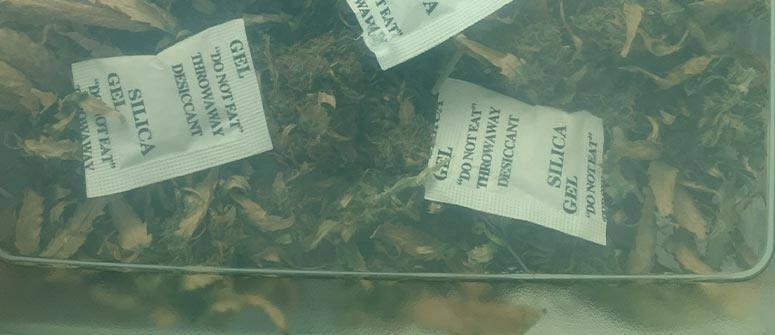
You’ve most likely come across silica gel before, in the form of those little humidity packs that help to keep objects totally dry.
Well, these can be great for drying and curing cannabis too. Silica gel is highly absorbent and will pull moisture from the air, which in turn makes those things around it dry faster. If you place silica gel packs in a jar while curing weed, they will help to pull excess moisture out of the bud. Moreover, they decrease the risk of mould developing, as they keep the relative humidity down.
Silica for bigger cannabis harvests
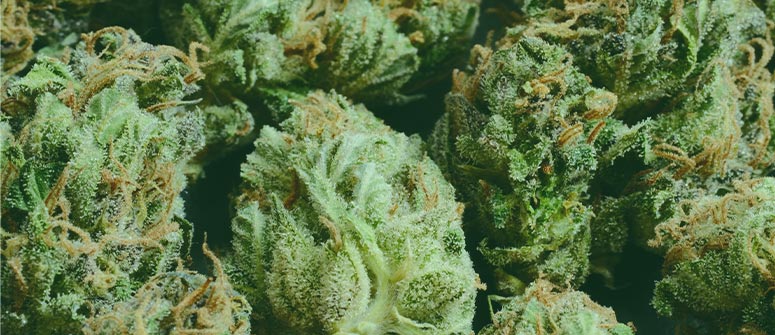
All in all, adding silica to a cannabis grow is well worth it. This is especially true for soil grows. For those trying out hydroponics, perhaps skip silica until you’ve got the basics down, otherwise you could end up doing more harm than good. With soil, though, administering silica should produce good results.
Helping plants to grow faster and stronger, absorb nutrients more efficiently, and bolstering their resistance to pests, silica can offer cannabis plants a whole lot. Though not an essential nutrient, once you try it, you may never go back!
.jpg)
.jpg)

.jpg)
